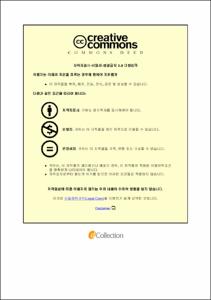선박․해양 구조물용 YS 460MPa 강재 FCAW 용접금속의 강도와 인성에 미치는 C의 영향
- Alternative Title
- Effects of C on the Strength and Toughness of FCAW Weld Metal of YS 460 MPa Steels for Ship and Offshore Structures
- Abstract
- 최근 조선 및 해양플랜트 산업분야의 구조물들은 사용상의 효율성 향상을 위해 대형화 되어가고 있고 이에 따라 이들 구조물에서 사용되는 강재도 고강도 및 극 후물화 되어가고 있다.
특히, 선박 중 컨테이너선의 경우 상갑판의 대부분이 열려 있는 선체구조로 되어 있기 때문에 선체의 종 굽힘 강도를 확보하기 위해 해치코밍(Hatch coaming) 등과 같은 상부 구조에서는 고 강도/고 인성을 갖는 극 후판 강재들을 적용하고 있다. 뿐만 아니라 최근에는 물류 수송에 따른 에너지 절약 및 물류 이동의 효율성 향상을 위해 10,000 TEU(Twenty-foot Equivalent Unit) 이상의 초대형 컨테이너선의 발주가 증가하고 있어, 이러한 선박의 경량화 및 취성파괴에 대한 안정성 등을 고려하여 상부구조용 강재로 항복강도 YS 460MPa급을 적용 하려는 노력이 진행되고 있다.
선급규칙에 의하면 YS 460MPa급 강재는 컨테이너 선박의 종 방향 구조 부재용 강재와 초 고장력강(Extra High Strength Steel)으로 분류되고 있으며, 또한 취성파괴에 대한 안정성을 강화하기 위해서는 기존의 연강 및 고장력강 보다도 더 높은 충격인성을 요구하거나 또는 더 낮은 온도에서의 충격시험을 규정하고 있다. 뿐만 아니라 이러한 강재가 해양플랜트 등에 적용될 시에는 사용환경에 따라 CTOD(Crack Tip Opening Displacement)시험 등의 파괴인성 평가를 요구하는 등 더욱더 규정과 요구가 엄격해 지고 있다.
일반적으로 용접금속의 높은 강도와 인성을 얻기 위한 용접재료의 성능은 첨가되는 미세 합금원소에 크게 의존된다. 용접금속의 강도 향상에 매우 유효한 탄소(C)는 오스테나이트 안정화 원소로써 용접금속이 냉각될 때 일부 결정립계에 C의 농도가 높은(C rich)영역을 형성하게 되어 마르텐사이트 변태온도에 도달 되어도 페라이트 변태가 지연되게 되어 일부가 오스테나이트로 잔류하게 됨으로서 마르텐사이트와 오스테나이트 혼합상(MA상)을 형성 할 수 있다. 뿐만 아니라 탄소는 강도 및 경화능을 향상할 수 있지만 과도한 첨가 시 용접성을 나쁘게 하기 때문에, 적정량의 사용이 매우 중요한 원소이다.
따라서 본 연구는 YS 460MPa급 강재가 적용되는 선박 해양 구조물 용접에 가장 많이 사용되고 있는 플럭스 코어드 아크 용접(Flux Cored Are Welding , FCAW) 프로세스를 적용하여 용접금속의 저온 충격인성과 파괴인성에 미치는 C의 영향을 규명하여 고강도, 고인성 용접재료 개발을 위한 기초자료로 활용하기 위해 수행하였다.
The effect of alloy element on the mechanical properties, charpy impact value and fracture toughness was investigated in the weld metal of YS 460 MPa steels for ship and marine structure.
In addition, the weld metal characteristics, when the weldments were heat treated after welding according to class society rules or AWS code, were investigated for YS 460MPa steel and FH Gr. steel(for LPG cargo tank) applying the flux cored wire developed through those effects.
This paper has an purpose to study the effect of C on the toughness of YS 460 MPa FCAW(Flux cored are welding) weld metal.
These effects were evaluated by charpy impact and CTOD test about 4 FCAW weld metal containing various C and Si content in relation to microstructure.
Increase of C content was helpful to increase Acicular Ferrite volume fraction and reduce Grain Boundary Ferrite and Ferrite Side Plate volume fraction by increasing super cooling rate for ferrite transformation.
Also, Increase of C content up to 0.045wt% made the strength and impact toughness higher by increasing Acicular Ferrite volume fraction.
The weld metal containing higher C content indicated higher CTOD value.
It is because the volume fraction of Grain Boundary Ferrite and Ferrite Side Plate, can play a role as crack initiation site, was reduced.
Effect of C on the strength and elongation of weld metal was higher with an increase of Si contents.
- Issued Date
- 2016
- Awarded Date
- 2016. 2
- Type
- Dissertation
- Publisher
- 부경대학교 일반대학원
- Alternative Author(s)
- HEO, SUNG HWA
- Affiliation
- 부경대학교 일반대학원
- Department
- 대학원 금속공학과
- Advisor
- 강창룡
- Table Of Contents
- Abstract ⅱ
1. 서론 1
2. 실험 방법 3
2.1 재료 3
2.2 용접 3
2.3 미세조직 4
2.4 충격시험 4
2.5 인장시험 4
2.6 CTOD시험 8
3. 실험결과 및 고찰 10
3.1 미세조직에 미치는 C의 영향 10
3.2 충격인성에 미치는 C의 영향 14
3.3 인장성질에 미치는 C의 영향 21
3.4 CTOD값에 미치는 C의 영향 22
4. 결론 27
참고문헌 29
- Degree
- Master
- Files in This Item:
-
-
Download
 선박․해양 구조물용 YS 460MPa 강재 FCAW 용접금속의 강도와 인성에 미치는 C의 영향.pdf
기타 데이터 / 1.54 MB / Adobe PDF
선박․해양 구조물용 YS 460MPa 강재 FCAW 용접금속의 강도와 인성에 미치는 C의 영향.pdf
기타 데이터 / 1.54 MB / Adobe PDF
-
Items in Repository are protected by copyright, with all rights reserved, unless otherwise indicated.